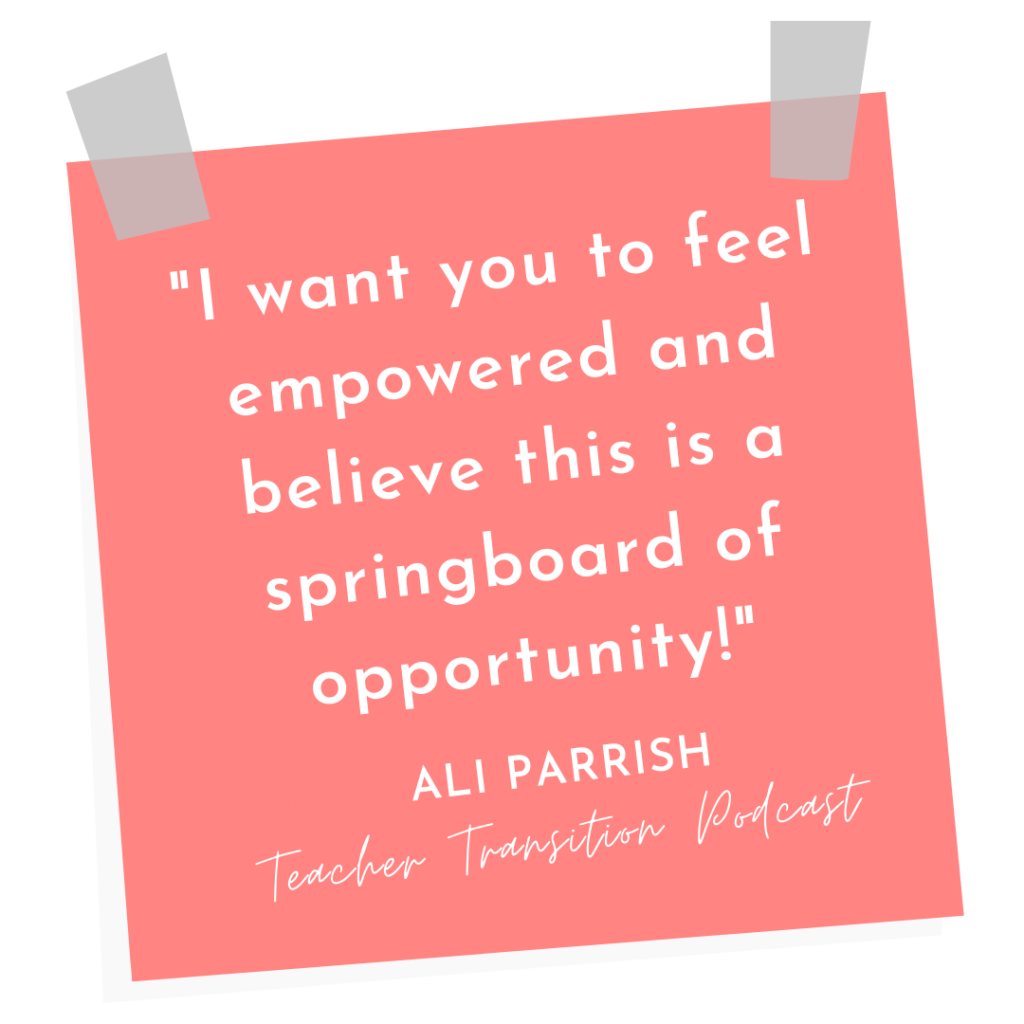The Show Notes
Is the possibility of a new career sounding more and more appealing? I bet you have a lot of instructional design questions! After hearing from students and other experts in instructional design, I hope you are excited about your own future!
I happen to know many of you are curious because you are asking excellent questions! Maybe you have some of the same ones. Listen to learn more and get all your instructional design questions answered in this solo episode!
Do I need to get a degree in instructional design, curriculum design, or educational technology?
Definitely not. Many times teachers feel like having a degree makes you legitimate or gives you permission to pursue a new career field. The truth is, all you need is the ability to be an instructional designer. You don’t have to have a degree to be legitimate or have permission.
You need the ability to do this, and being a teacher qualifies you. When you write lesson plans, or create learning resources, you are doing the work of an instructional designer. On top of that, the most learning you will ever do is what you do on the job.
What if a job listing requires a degree?
I have had a lot of experience hiring instructional designers for my own agency. Any time I am faced with the choice between someone with a degree versus someone with a portfolio, I choose the person with the experience. I have turned down plenty of applicants with fancy titles and doctorates. A piece of paper did not give me the confidence I needed.
A company may very well list a degree in instructional design as a “requirement” to apply. But here’s a little secret. Don’t be the one to decide you’re not qualified. Let them make that choice. Having a portfolio will make them think twice before throwing you in “the pile”.

What kind of job opportunities are there in instructional design?
Well, it’s kind of like a big ‘ol cafeteria. No joke. Instructional design has opportunities available that are part-time or full-time, and each of those could be remote or on-site. You could find work as an employee with benefits. You could also work for yourself as a contractor.
So many businesses and institutions hire instructional designers! Education companies, universities, non-profits, for-profits all hire them. Any business that is required to provide training to help people do their job better needs an instructional designer!

What kinds of roles does an instructional designer fulfill?
Additionally, the roles you might be filling as an instructional designer are really diverse! You might be doing quality assurance-checking to make sure that the resources in a lesson actually fulfill the written objectives.
You could be supporting professors and helping them transfer their content to an online format. You might be in charge of determining how the material is delivered and what tools they will use.
Sometimes instructional designers are project managers, helping teams communicate and meet deadlines. Many times these roles are a combination of a few of these jobs!
What if I’m afraid of tech?
It’s absolutely not a problem! You might be relieved to learn that a large number of instructional designers rely on Microsoft Word and good ‘ol Expo markers.
If you’ve got a means of communicating your ideas and creativity, that’s all you need! Many times, there are other teams of tech wizards who will put your ideas to work!
What tools do instructional designers use most often?
Believe it or not, most instructional designers rely on Microsoft Word or Google Docs the most. I cover many other tools that will be useful to you in the course, From Teacher to Instructional Designer.
If the tech side of the job does interest you, (like being an instructional developer) then take time to get familiar with one tool that records video, and one tool to make an online course.
There are so many options out there for both. Many roads lead to the same destination. Plus, new tools are always being created, so there’s never going to be one tool that rules them all.
How can you get experience?
Like I mentioned, every business or organization needs training materials created. Or they need to improve or update what they already have. So find someone in your personal network who might need support. Ask if you can create something for them!
In the course, you will be offered tons of ideas for materials you could start creating. I’ve been blown away by what students in the course have created for causes like cancer or sleep apnea research, just to name a couple!
How do you get hired if you don’t have a background in teaching?
Instructional design is a natural next step for teachers because they require a lot of the same skill sets. But this field is also unique in that companies who hire instructional designers see strengths in all kinds of experience, not just the classroom.
So if you haven’t even stepped foot in the classroom, don’t sweat it. Becca Pike is an instructional designer who did a lot of preparation for teaching, but never did become a full-time teacher. Check out her episode here!
What’s more important is being able to translate your current skills and experience into vocabulary terms relevant to instructional design. The course can definitely help with that too.
What skills should I identify on our resume for instructional design?
Always start with the job description. Use the terms they use to describe your experience. A super helpful resource in the course is being able to learn directly from a certified resume writer.
Did you know that 75% of resumes are never seen by people? They are tossed out after running through a filter. In the course, you can learn how to get past that filter.
You can even submit your current resume to see how it scores! And of course, I’ve got resume templates for you to take and use!
What can I do to make myself stand out more?
If you haven’t picked up on it yet, having a portfolio in instructional design is so important! Knowing what to put in that portfolio can be a bit overwhelming. In the course, I’ve created a template for you to use so you can stop getting stuck.
You can even learn how to build a simple website to house all your projects. Perhaps most helpful is that you also have access to example portfolios so you can have more confidence as you build your own.
Where else do I need to network?
A perfect place to gain more connections is by joining the membership! When you join the community, I can learn about your strengths and skills and connect you with companies who are hiring.
You will also have access to our guest experts who you can follow up with and draw upon their connections. I love making connections and introductions for people in the membership community!
When you join the membership, you also get access to the course Find Your Next Dream Job. Here you’ll learn all about how to find a job mentor and why they can be a key part of your job search strategy.
Do You Have More Instructional Design Questions?
If you’re ready to explore the possibility of pursuing a career as an instructional designer, I want to hear from you! What questions did I miss? And how can I support you?
Ready to Become an Instructional Designer Too?
Or just need the extra support?
Join the membership!
If you enjoyed this episode I invite you to take a screenshot and tag me on your Instagram stories @teachertransition and tell me your biggest takeaway!
Want to know what other work opportunities you might love beyond the classroom? Click here to get the FREE Top Jobs for Teachers download.
Did someone say GIVEAWAY?
Are you loving the podcast? Leave a review on iTunes and tell us what you’re learning! Already left a review? Review a resource you’ve used and share how it’s helped you in YOUR teacher transition.
Anyone who enters will be eligible to win support like coaching calls with Ali or course access! Stay tuned for details!
Resources Mentioned in the Show
Ready to dive into YOUR career in instructional design? Click HERE to enroll in the course- From Teacher to Instructional Designer today!


